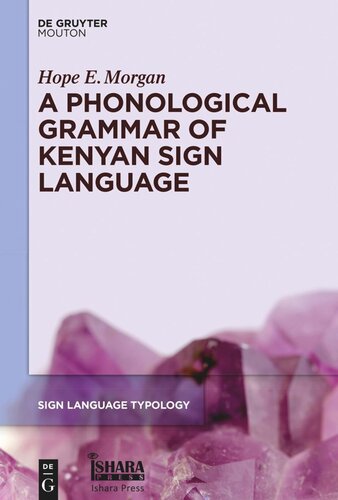

Most ebook files are in PDF format, so you can easily read them using various software such as Foxit Reader or directly on the Google Chrome browser.
Some ebook files are released by publishers in other formats such as .awz, .mobi, .epub, .fb2, etc. You may need to install specific software to read these formats on mobile/PC, such as Calibre.
Please read the tutorial at this link: https://ebookbell.com/faq
We offer FREE conversion to the popular formats you request; however, this may take some time. Therefore, right after payment, please email us, and we will try to provide the service as quickly as possible.
For some exceptional file formats or broken links (if any), please refrain from opening any disputes. Instead, email us first, and we will try to assist within a maximum of 6 hours.
EbookBell Team

4.7
106 reviewsThis grammar of Kenyan Sign Language (KSL) phonology adds to a sparse literature on the units of categorical form in the world’s sign languages. At the same time, it brings descriptive and theoretical research on sign language phonology into better alignment by systematically evaluating current models of sign language phonology for each of the main parameters – handshape, location, and movement – against the KSL data. This grammar also makes a methodological contribution by using a unique dataset of KSL minimal pairs in the analysis, demonstrating that minimal pairs are not as infrequent in sign languages as previously thought.
The main content of the book is found in five chapters on handshape, location, core articulatory movement, manner of movement, and other distinctive features (e.g., orientation, mouth actions). The book also contains two large appendices that document the phonological evidence for each of the 44 handshapes and 37 locations.
This book will be a key reference for descriptive and typological studies of sign phonology, as well as a helpful resource for linguists interested in understanding the similarities and differences between current models of sign phonology and identifying promising avenues for future research.